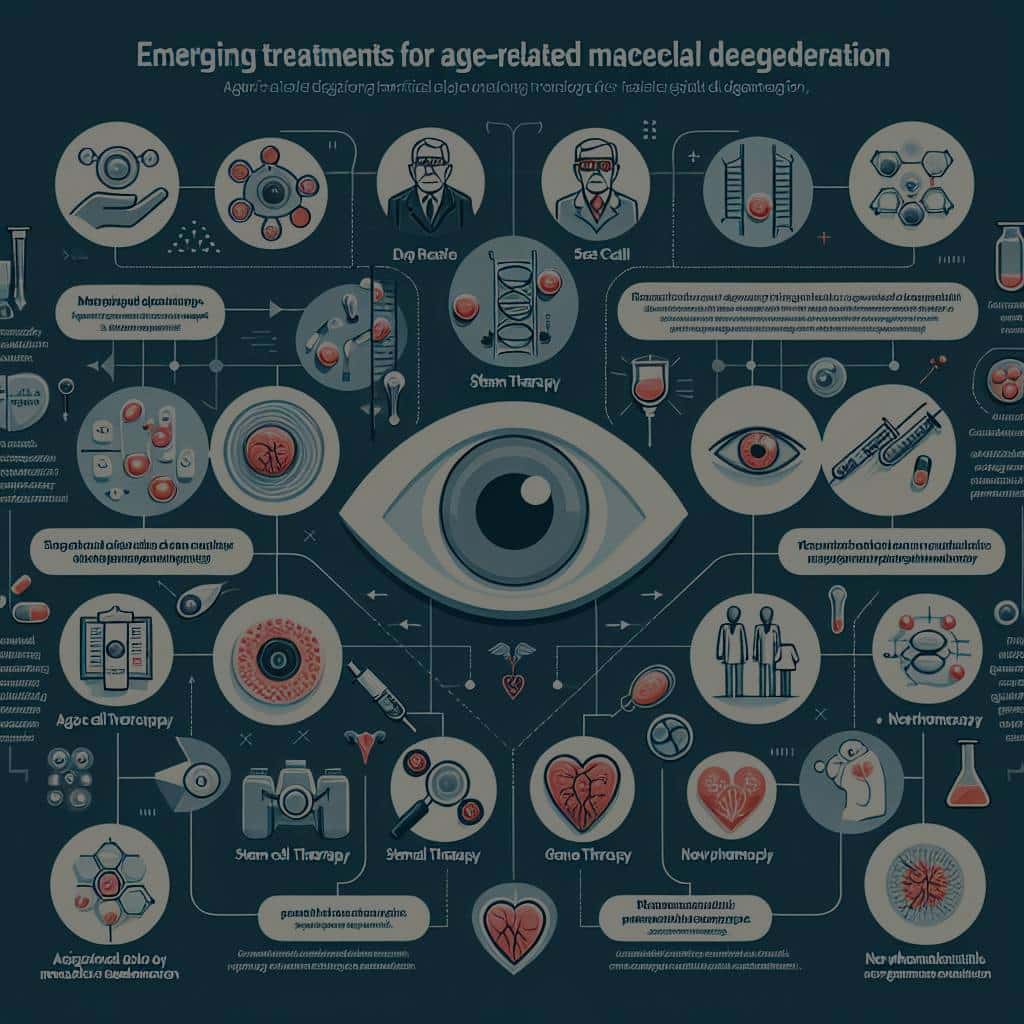As you age, your vision may naturally start to deteriorate. This is a normal part of aging, but for some individuals, this degeneration may accelerate due to a condition known as Age-Related Macular Degeneration (AMD). This term refers to the degradation of key cells in the retinal region of your eye. AMD can lead to significant vision loss, especially in those over the age of 50.
Currently, the most common type of AMD treatment involves the injection of anti-VEGF (Vascular Endothelial Growth Factor) medication. Anti-VEGF treatment works by stemming the growth of new, abnormal blood vessels in the eye, a key characteristic of the neovascular or "wet" type of AMD. However, the effects of this treatment are not long-term and require repeated injections for continuous management of the condition.
Also to read : What Are the Best Practices for Mindful Parenting of Children with ADHD?
In the evolving landscape of clinical trials and medical advancements, new treatments for AMD are continually being explored. In this article, we delve into some of the most promising developments in AMD treatment; from cell therapy to long-term injection alternatives.
Alternative Drug Delivery Methods
Conventional AMD treatment involves frequent injections into the eye, which is an uncomfortable prospect for many patients. Besides, these injections can pose risks like infections. Thus, researchers have been investigating alternative drug delivery methods that could provide the same benefits but with fewer injections.
Also to discover : How Does Occupational Therapy Support Independence in Dementia Patients?
An interesting development in this area is the advent of sustained-release devices. These devices are small implants that can be inserted into the eye. They slowly release the necessary medication over several months, thus reducing the need for frequent injections.
One such device currently in the phase 3 clinical trial stage is the GB-102. This device releases sunitinib, an anti-VEGF medication, over a period of six months. Another promising development is the Port Delivery System (PDS) with ranibizumab. This refillable eye implant designed to release anti-VEGF medication over a long period is also in the phase 3 trial stage.
Cellular Therapy for AMD
Cellular therapy is a growing field of research with potential applications in treating a wide range of diseases, including AMD. The principle behind cell therapy is to replace or repair damaged cells with healthy ones. In the case of AMD, the damaged retinal cells could potentially be replaced, reversing or halting the degeneration process.
A particular area of interest within cell therapy for AMD is the use of retinal pigment epithelial (RPE) cells. The idea is to use these cells, either derived from stem cells or genetically engineered, to replace the damaged RPE cells in an AMD patient’s eye.
A number of clinical trials are ongoing to investigate the effectiveness and safety of RPE cell therapy. For instance, a phase 1/2 trial is currently underway using a patch of RPE cells derived from stem cells, which are transplanted into the eye. However, it is worth noting that while the potential of cellular therapy is exciting, it is still in the early stages of research and a lot of work remains to be done before it can become a mainstream treatment option.
Gene Therapy: A Long-Term Solution?
Gene therapy is another promising avenue being explored for the treatment of AMD. The idea behind gene therapy is to introduce, alter, or suppress a gene to help treat a disease. For AMD, the gene of interest is the VEGF gene, which initiates the formation of new, abnormal blood vessels in the eye.
One approach being examined is the use of a viral vector to deliver a gene that produces a protein to inhibit VEGF. By doing so, this could effectively offer a long-term solution to AMD by continuously producing the anti-VEGF protein without needing repeated injections.
Currently, there are a number of gene therapy trials for AMD in progress. For instance, the phase 1 trial using the ADVM-022 viral vector to deliver the anti-VEGF gene has shown promising results. However, similar to cellular therapy, gene therapy is still in the early stages of research and its full potential in treating AMD is yet to be realized.
Complement Inhibition: Tackling AMD Differently
Complement inhibition represents another completely different approach to treating AMD. The complement system is a part of the immune system that enhances the ability of antibodies and phagocytic cells to clear microbes and damaged cells, which is believed to play a role in the development of AMD.
Drugs that inhibit the complement system are being investigated as potential treatments for AMD. For example, the drug Pegcetacoplan, which inhibits the complement protein C3, is currently in phase 3 trials for AMD treatment. The idea is that by inhibiting the complement system, the progression of AMD could be slowed or halted.
With each of these promising therapies in the clinical trial stages, it is an exciting time for AMD research, full of potential for breakthroughs in patient care and treatment. It is hoped that these treatments could offer better, more effective, and long-term solutions for those suffering from AMD. However, it is also important to remember that the development of new treatments takes time and rigorous testing before they can become widely available.
Dry AMD Treatment: Exploring New Possibilities
Dry AMD, also known as non-neovascular AMD, is a form of age-related macular degeneration characterized by the presence of drusen and the gradual degeneration of the retinal pigment epithelium. Unlike wet AMD, dry AMD does not involve the growth of abnormal blood vessels. Current treatment options for dry AMD are limited, focusing mostly on vitamin supplementation to slow the progression of the disease. However, some new avenues are being explored.
One of these is the use of nanotechnology for drug delivery. A promising area of research involves the use of tiny nanoparticles to deliver anti-inflammatory drugs directly to the retina. This approach could potentially slow the progression of dry AMD and minimize vision loss. A phase 1 clinical trial is currently underway exploring this innovative method.
Another intriguing area of exploration is neuroprotection, which aims to protect the retina from further damage. Ciliary neurotrophic factor (CNTF), for instance, is a protein that has been shown to have neuroprotective effects. A small implantable device that slowly releases CNTF is being tested in phase 2 clinical trials as a treatment for dry AMD.
As with any new treatment approach, the safety and efficacy of these methods must be thoroughly evaluated through rigorous clinical trials before they can be approved for use.
Conclusion: Navigating the Future of AMD Treatment
The landscape of age-related macular degeneration treatment is undoubtedly a dynamic one, teeming with potential breakthroughs. The advent of alternative drug delivery methods, cellular therapy, gene therapy, complement inhibition, and new treatment options for dry AMD all represent promising strides towards better management of the condition, and, potentially, reversing vision loss.
It’s crucial to remember, however, that these potential treatments are still in various stages of clinical trials. As such, it is essential for patients and healthcare professionals to maintain an open dialogue about the potential risks and benefits of these treatments, particularly as more data becomes available.
The ultimate goal of this research is not only to treat AMD but also to improve the quality of life for patients living with this condition. The future holds great promise with the advent of these emerging treatments, and there is justified optimism for those affected by age-related macular degeneration.
While we await these potential breakthroughs, it is equally important to continue routine eye examinations, maintain a healthy lifestyle and follow prescribed treatment plans. It is through these combined efforts that we can hope to effectively combat the detrimental effects of AMD and strive towards a future with better sight for all.






